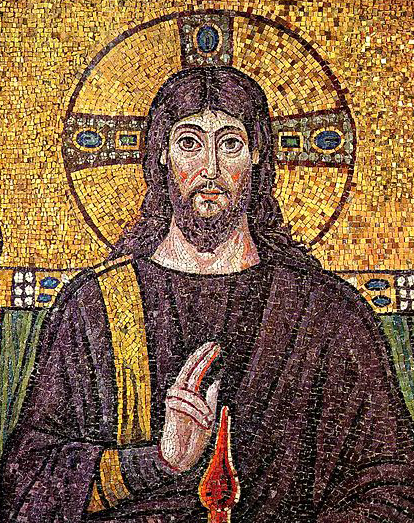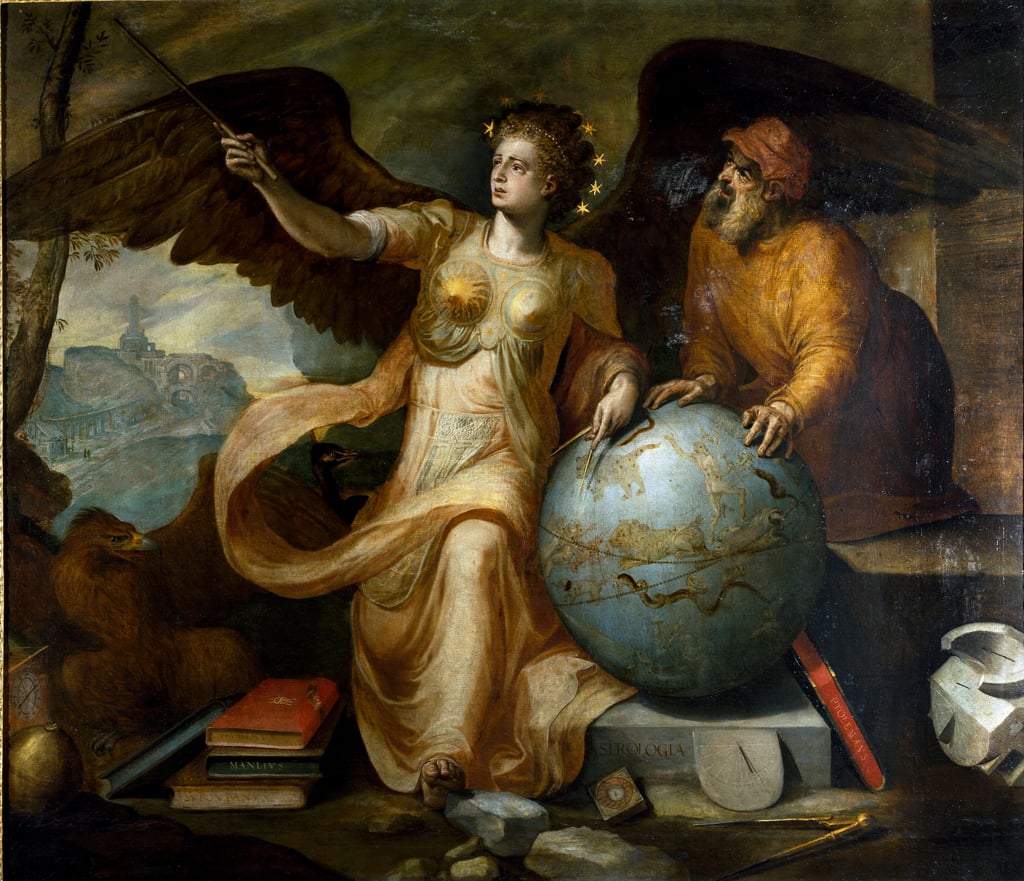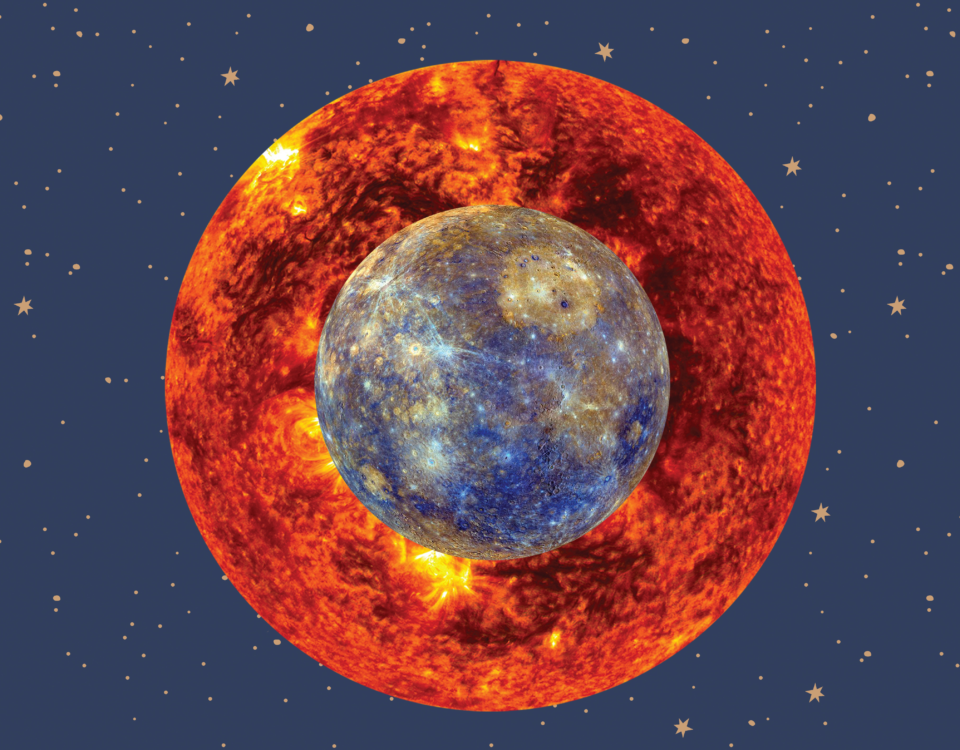Uncovering Astrological Allegory in the Biblical Narrative: A Comprehensive Study of the Sun’s Path Through the Zodiac

Age of Aquarius
March 31, 2023
Allegory of the Catholic Faith by Johannes Vermeer
March 31, 2023Warning: It is not our intention to shake loose any deeply held beliefs. Easyastro.me is NOT saying this article represents the truth. It only discusses a well-known theory, and looks at the details of it. No one will know or be angry with you if you skip this article.
Before we get started, I want to add a note:
Astrology is not a mystical, magical, or enigmatic force. Rather, it is a system developed over tens of thousands of years. Humanity has built a vast reservoir of astrological symbolism, which has become the cultural milieu in which we exist. When civilizations emerged, they did not start with a blank canvas for a worldview. Numerous archaeological and anthropological findings reveal that our ancestors crafted mythologies, legends, rituals, spiritual realms, and correlations between their surroundings and experiences. Astrology consistently formed the foundation of these ideas.
Our ancestors conceived a plethora of deities and celestial beings representing various domains, professions, nations, regions, and character traits, with many linked to the Sun, the Moon, planets, or constellations in the night sky. Naturally, this is what they resorted to—given their limited understanding of the world and the celestial phenomena they observed, such as the Sun's cycle in the sky, the Moon's ever-changing appearance, and the countless celestial objects and occurrences that unfolded every night. It is challenging for us to comprehend their perspective, but their reliance on astrology to make sense of and navigate their world is entirely understandable.

Astrological allegory, the idea that celestial movements and phenomena are symbolically represented in religious texts and mythological narratives, has been a subject of interest for scholars and theologians alike. In this article, we will examine the potential connections between the story of Jesus, other biblical narratives, and the Sun's movement through the twelve zodiac constellations. This exploration will provide insight into the significance of key events in Jesus' life as they relate to different zodiac signs and their associated symbols, as well as the broader implications of astrological allegory in religious texts.
“The Christian religion is a parody on the worship of the Sun, in which they put a man whom they call Christ, in the place of the Sun, and pay him the same adoration which was originally paid to the Sun.”
-Thomas Paine
(Founding Father of America)

Jesus' Life and the Zodiac

The life of Jesus, as chronicled in the New Testament, contains various events that seem to correspond with the Sun's progression through the zodiac constellations. Beginning with his birth in the sign of Virgo, the Virgin, Jesus' life appears to unfold in tandem with the celestial movements of the Sun. This parallel continues through his ministry, where he is often associated with the symbol of the fish (Pisces), his crucifixion under the sign of Sagittarius, and his resurrection in connection with the spring equinox.
For instance, the symbolism of Jesus being born of a virgin corresponds with the constellation Virgo, which is often represented as a virgin holding a sheaf of wheat. The biblical narrative of Jesus' birth in Bethlehem, meaning "house of bread," further emphasizes this connection. Additionally, the concept of Jesus being born in a cave, as was believed by early Christians, may also be linked to the zodiac. The winter solstice, occurring on December 22nd, marks the lowest point of the Sun in the sky, effectively symbolizing the "death" of the Sun. Three days later, on December 25th, the Sun is "reborn" as its position rises once again, a phenomenon that could be interpreted as the birth of Jesus.
Throughout Jesus' life and ministry, the Sun's journey through the zodiac continues to parallel his experiences. For example, the symbolism of Jesus calming the storm on the Sea of Galilee may be associated with the Sun's passage through Gemini, represented by the twins Castor and Pollux. The transfiguration of Jesus, described as his clothes becoming dazzlingly white, corresponds with the Sun's position during the height of summer in the sign of Leo, the Lion.
The crucifixion of Jesus aligns with the Sun's movement into Scorpio, the Scorpion, which is said to sting the Sun and cause it to die. The concept of Jesus being betrayed by Judas, often characterized as a "backstabber," fits with the symbolic nature of the scorpion. Furthermore, the idea of Jesus being crucified between two thieves has been interpreted as representing the Sun's position between the signs of Sagittarius and Capricorn during the winter solstice.
Throughout Jesus' life and ministry, the Sun's journey through the zodiac continues to parallel his experiences. For example, the symbolism of Jesus calming the storm on the Sea of Galilee may be associated with the Sun's passage through Gemini, represented by the twins Castor and Pollux. The transfiguration of Jesus, described as his clothes becoming dazzlingly white, corresponds with the Sun's position during the height of summer in the sign of Leo, the Lion.
The crucifixion of Jesus aligns with the Sun's movement into Scorpio, the Scorpion, which is said to sting the Sun and cause it to die. The concept of Jesus being betrayed by Judas, often characterized as a "backstabber," fits with the symbolic nature of the scorpion. Furthermore, the idea of Jesus being crucified between two thieves has been interpreted as representing the Sun's position between the signs of Sagittarius and Capricorn during the winter solstice.
The resurrection of Jesus is also tied to the celestial movements, specifically the winter solstice. After the winter solstice, the Sun appears to remain stationary for three days before it starts to rise once again on December 25th, marking the beginning of longer days. This event is often associated with the "rebirth" of the Sun. Similarly, the story of Jesus' resurrection, as described in the New Testament, states that he rose from the dead on the third day after his crucifixion. This notion of resurrection and rebirth can be seen as a parallel to the Sun's return to life after the winter solstice. In an astrological context, the rebirth of Jesus after three days corresponds with the completion of a full cycle through the zodiac, bringing us back to the starting point. This cyclical nature of the Sun's journey through the zodiac, as well as the key events in Jesus' life, further emphasizes the connection between the celestial movements and the narrative of Jesus' life as depicted in the Bible.
Jesus and the Age of Pisces

The theory connecting the story of Jesus to astrological symbolism suggests that the life of Jesus Christ and the rise of Christianity represent the transition from the Age of Aries to the Age of Pisces. This interpretation is based on the idea that the events and teachings of Jesus are representative of the shift between these astrological ages.
According to this theory, the Age of Aries (preceding the Age of Pisces) was characterized by the worship of the ram or the lamb in various cultures, such as the ancient Egyptians and Hebrews. In Judaism, the sacrifice of a lamb or ram played a significant role in religious practices, like the Passover.
Proponents of this theory argue that the life of Jesus and the emergence of Christianity mark the transition to the Age of Pisces. Pisces is a zodiac sign represented by the symbol of two fish. Some connections drawn between Jesus, Christianity, and Pisces include:
- The fish is an early symbol of Christianity, known as the Ichthys or the Jesus fish.
- Jesus is often referred to as the "Lamb of God," suggesting a connection between the old (Aries, the ram) and the new (Pisces, the fish).
- In the Bible, Jesus performed the miracle of feeding a multitude with just a few loaves of bread and two fish.
- Jesus called his disciples "fishers of men," and several of them were fishermen by profession.
In the Bible, Jesus also said he would be with his followers until the end of the age (Matthew 28:20). Some proponents of this theory interpret this statement as a reference to the Age of Pisces, implying that Jesus' spiritual presence will last throughout the entire astrological age.

Astrological Allegory in Other Biblical Narratives
The presence of astrological allegory in the biblical narrative extends beyond the story of Jesus. The story of Adam and Eve, for example, has been linked to the constellations of Virgo and Bootes, while the story of Moses contains celestial symbolism in the form of the burning bush and the parting of the Red Sea. The tale of Joseph and his coat of many colors can also be understood as an allegory for the Sun's journey through the zodiac, with each color representing a different constellation.
The enigmatic Book of Revelation is another biblical narrative that contains potential astrological allegory. The celestial imagery and symbolism present in the text, such as the woman clothed with the sun and the dragon with seven heads, can be understood as representations of various constellations and celestial events. For instance, the woman clothed with the sun has been linked to the constellation Virgo, while the dragon with seven heads may symbolize the constellation Hydra or Draco.
The Four Horsemen of the Apocalypse, another key element in the Book of Revelation, can also be interpreted as an astrological allegory. The white horse, representing conquest, has been associated with the constellation Sagittarius, the archer. The red horse, signifying war, corresponds to the constellation Scorpio, while the black horse, representing famine, has been linked to the constellation Libra, symbolized by scales that measure food. Finally, the pale horse, signifying death, is connected to the constellation Capricorn, the goat, which is associated with the winter solstice and the "death" of the Sun.
Broader Implications of Astrological Allegory in Religious Texts
The potential presence of astrological allegory in biblical narratives highlights the interconnectedness of religious texts and celestial phenomena. By examining these connections, we can gain a deeper understanding of the cultural, historical, and symbolic contexts in which these stories were created. This understanding, in turn, can help us appreciate the timeless wisdom and spiritual insights encoded in these texts.
The idea that biblical narratives contain astrological allegory is not limited to Christianity; other religious traditions, such as Hinduism and ancient Egyptian religion, also contain stories and myths that can be understood as celestial allegories. The study of these connections not only reveals the universality of religious themes and motifs but also highlights the role of the cosmos as a source of inspiration and spiritual meaning across cultures.
It is important to note that recognizing the presence of astrological allegory in religious texts does not diminish their spiritual value or validity. Instead, it allows us to appreciate the multidimensional nature of these texts, which often contain multiple layers of meaning and symbolism. In this way, the study of astrological allegory can enrich our understanding of religious texts and deepen our connection to the timeless truths they convey.
Conclusion
In conclusion, the exploration of astrological allegory in the biblical narrative, particularly in the story of Jesus, reveals the profound connections between celestial movements and religious symbolism. By examining these connections, we can gain a deeper understanding of the cultural, historical, and spiritual contexts in which these stories were created. Furthermore, the presence of astrological allegory in other religious traditions highlights the universality of religious themes and the role of the cosmos as a source of inspiration and spiritual meaning across cultures. Ultimately, the study of astrological allegory in religious texts can enrich our understanding of these texts and deepen our connection to the timeless truths they convey.
More Reading:



